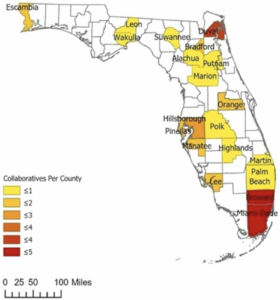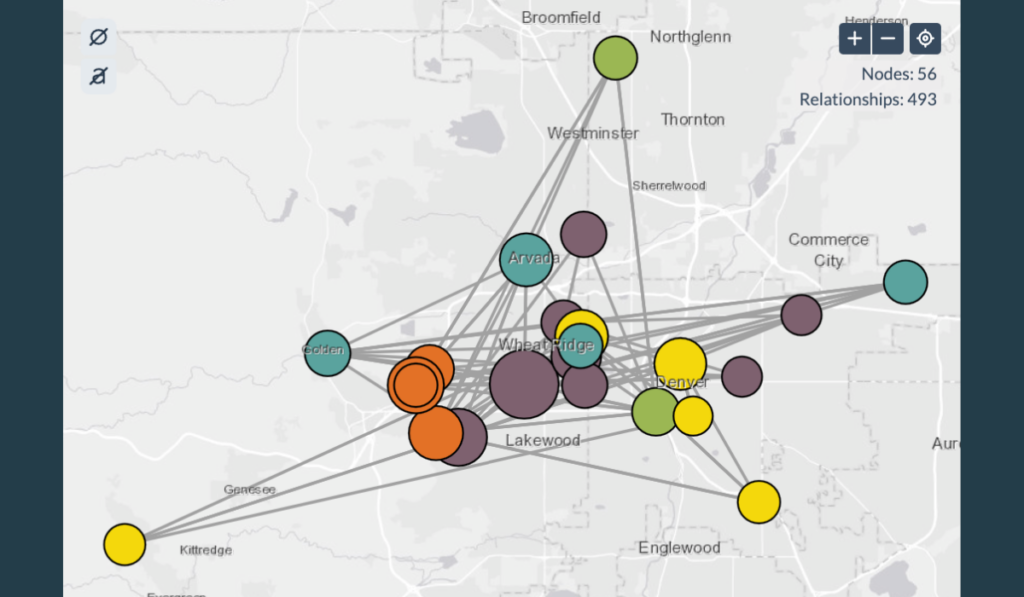How social network analysis uncovered hidden vulnerabilities—and what coalition leaders can do about it
We’re excited to launch a new series of case study highlights drawn from peer-reviewed research and evaluation reports that have used PARTNER CPRM data, analysis, or survey tools to solve pressing challenges, answer key questions, and generate actionable insights.
These studies span a diverse range of sectors, issue areas, geographies, and network types—from healthcare collaboratives in Florida to global development coalitions across Latin America. What they all share is a commitment to using network science to understand and strengthen the relationships that drive impact. Rather than focusing on abstract theory, each case spotlights tangible outcomes and lessons learned, showing how organizations used PARTNER CPRM to identify gaps, guide strategy, and build more resilient, equitable systems.
Our first case study is based on the findings from a 2022 peer-reviewed study published in the Journal Social Networks, analyzing 42 healthcare coalitions across Florida using PARTNER CPRM data, survey questions, and visualizations.
🚨 Problem: Fragile Networks Undermining Healthcare Resilience

A comprehensive study using PARTNER CPRM data found that nearly one-third of coalitions were highly susceptible to fragmentation, meaning they could become structurally unstable if even a single organization left. This isn’t just a theoretical risk: fragmentation compromises resource flow, communication, and resilience—particularly in times of crisis like the COVID-19 pandemic.
This structural fragility poses real-world consequences. The study found a statistically significant link between higher fragmentation scores and fewer health system outcomes, such as improved communication, policy changes, or reductions in disparities. Despite good intentions and strong missions, coalitions without a solid network foundation may fall short of their goals.
💡 Insights: Key Contributors Are Also the Greatest Points of Risk
Using data from 42 healthcare collaboratives and 817 organizations across Florida (2009–2017), researchers used social network analysis (SNA) tools in the PARTNER CPRM platform to assess centrality, resilience, and resource flow. Several clear patterns emerged:
- Organizations identified as key players using fragmentation centrality contributed the most resources across nearly every category—more so than organizations identified by other centrality measures like betweenness or eigenvector.
- For example, only 4% of all organizations in the study reported contributing funding—but fragmentation and betweenness centrality identified 41% of those contributors, meaning those key funders are also linchpins in the structure.
- Community connections (42%) and in-kind resources (25%) were the most common contributions overall—and Exponential Random Graph Models (ERGMs) found these to be the strongest predictors of tie formation within networks.
- Core-periphery analysis revealed stark asymmetry: just one-third of organizations were “core” members, yet these core actors provided a disproportionate share of funding, staffing, leadership, and expertise. The periphery contributed little and was less integrated.
In short, coalitions often depend on a small number of highly central actors—not just for relationships, but also for resources. And the loss of those actors would trigger both structural collapse and resource withdrawal.
📢 Action: What Collaboratives Can Do with These Insights
The findings offer actionable lessons for coalition builders and backbone teams working to strengthen resilience and maximize impact:
- Use fragmentation centrality to identify not just “important” players, but indispensable resource hubs. These actors are critical to sustaining collaboration and resource flow.
- Assess your core-periphery structure. If resources are too concentrated in a few core organizations, consider strategies to engage and equip peripheral members to contribute more meaningfully.
- Prioritize social and non-monetary resources. Community connections and in-kind resources—not funding or paid staff—were most associated with tie formation across networks. Relationships matter more than revenue when it comes to coalition cohesion.
- Monitor network resilience regularly. As networks grow or evolve, new fragmentation risks may emerge. Periodic assessments using PARTNER CPRM can help detect early warning signs and guide strategic adjustments.

📈 Outcomes: Stronger Networks, More Community Impact
The study demonstrated that coalitions with lower fragmentation scores reported better system-related outcomes. While correlation doesn’t guarantee causation, the data suggest that network cohesion—measured through centrality and tie formation—matters.
In total:
- One-third of collaboratives were highly susceptible to fragmentation.
- Fragmentation centrality had a significant negative relationship to outcomes (coefficient = −9.041, p = 0.0238).
- Community connections (67%) and in-kind resources (62%) were the most significant contributors to tie formation across models.
By surfacing these patterns, PARTNER CPRM didn’t just visualize networks—it equipped coalitions with strategic, data-driven insights to protect their most valuable partnerships and build more resilient systems.
Explore More:
Bohnett, E., Vacca, R., Hu, Y., Hulse, D., & Varda, D. (2022). Resilience and fragmentation in healthcare coalitions: The link between resource contributions and centrality in health-related interorganizational networks. International Journal of Disaster Risk Reduction.
https://www.ncbi.nlm.nih.gov/pmc/articles/PMC9420007/

Want to explore how PARTNER CPRM can strengthen your network?
Seeing is believing! Learn more at visiblenetworklabs.com/partner-cprm or schedule a consultation or web demo with our team to get a personalized walkthrough of the platform based on your community context and specific use case.






